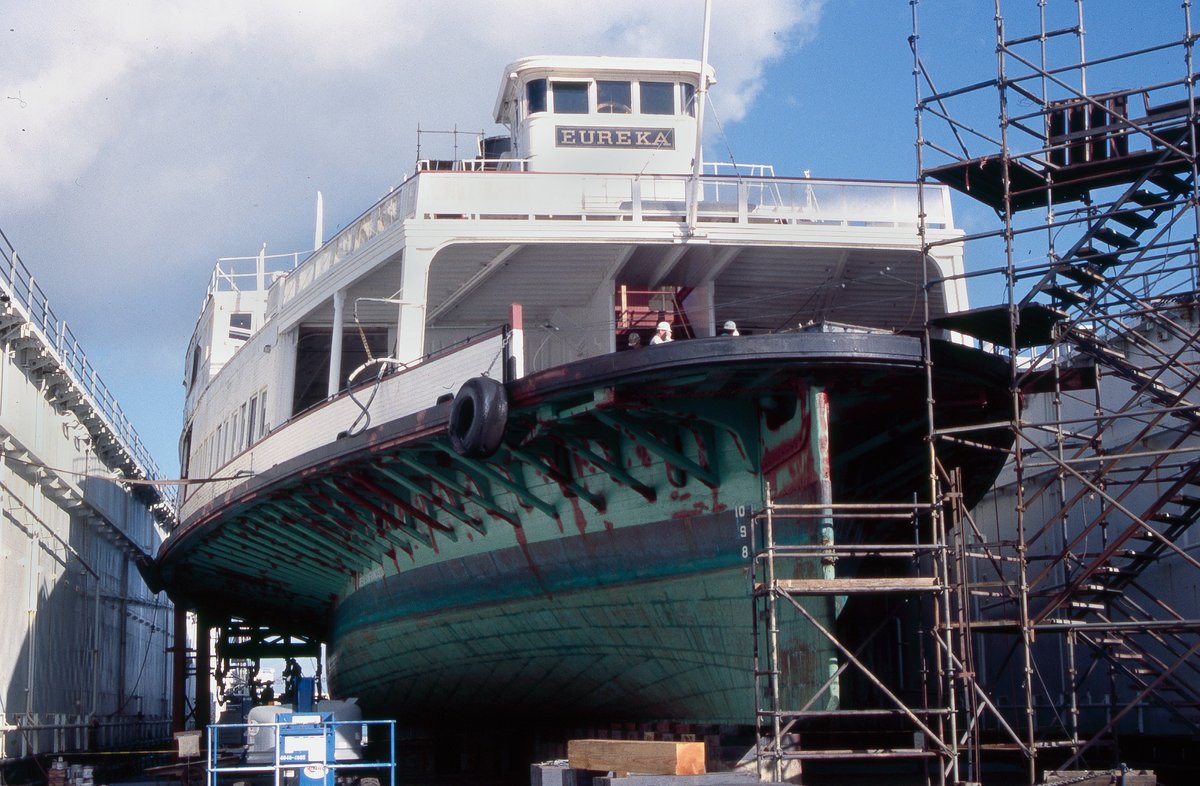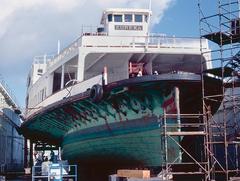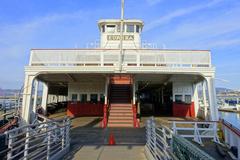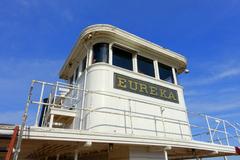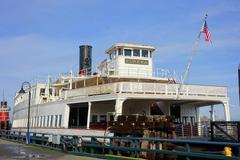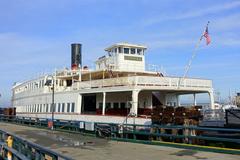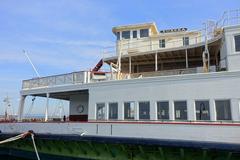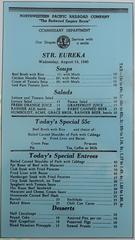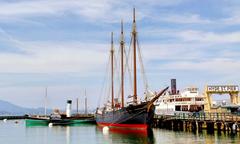Eureka, California Historical Sites Visiting Hours, Tickets, and Attractions Guide
Date: 14/06/2025
Introduction
Eureka, California, is a captivating coastal city where Gold Rush history, indigenous culture, and Victorian-era charm meet the dramatic landscapes of the North Coast. Founded in 1850 and originally home to the Wiyot people, Eureka thrived as a center for the timber and maritime industries, leaving a legacy of grand architecture and a vibrant cultural scene (California Historical Landmarks). Today, Eureka welcomes visitors eager to explore its historic districts, museums, and natural wonders. This guide provides essential information on historical sites, visiting hours, ticketing, attractions, travel tips, and local events to help you plan a memorable visit.
Table of Contents
- Introduction
- Founding and Early Settlement
- Economic Development and Industry
- Social and Cultural Significance
- Notable Historical Events
- Visiting Hours, Tickets, and Guided Tours
- Humboldt Bay Attractions and Travel Tips
- Social and Cultural Events
- Photographic Spots
- FAQ
- Preservation and Contemporary Identity
- Conclusion and Call to Action
Founding and Early Settlement
Eureka’s story began with the Wiyot people, whose ancestral lands surround Humboldt Bay. The city’s name—Greek for “I have found it”—became California’s state motto, reflecting the spirit of discovery during the Gold Rush era (California Historical Landmarks). Founded in 1850, Eureka quickly grew as a port of entry and was incorporated in 1874, marking its transformation into a hub for settlers, trade, and industry.
Economic Development and Industry
Eureka’s economic boom was propelled by its location on Humboldt Bay and the region’s vast redwood forests. The timber industry dominated from the late 19th to early 20th centuries, with lumber shipped to San Francisco and beyond. Fishing and shipbuilding also shaped the city’s growth, and these industries remain part of Eureka’s cultural identity.
Social and Cultural Significance
As the major economic and social center for northwestern California, Eureka boasts a rich cultural heritage. Its Historic Old Town, listed on the National Register of Historic Places, is renowned for its Victorian-era buildings and hosts community events year-round (Wikipedia). The Clarke Historical Museum, located in Old Town, features exhibits on Native American cultures—especially the Wiyot, Yurok, Karuk, and Hupa tribes—and the history of local industries (Clarke Historical Museum).
Notable Historical Events
-
1850s–1860s: Conflict and Displacement
The arrival of European settlers led to tragic confrontations, notably the 1860 Wiyot Massacre on Indian Island, which remains a focus of local reconciliation efforts. -
Late 19th Century: Economic Expansion
The timber and fishing industries fueled rapid growth, supported by new rail links. -
20th Century: Social and Environmental Changes
Labor movements, the rise of cultural organizations, and, later, debates over redwood conservation shaped Eureka’s evolving identity.
Visiting Hours, Tickets, and Guided Tours
Clarke Historical Museum
- Hours: Tuesday–Saturday, 10 AM–4 PM; closed Sundays and Mondays.
- Tickets: Adults $7, Seniors/Students $5, Children under 12 free.
- Guided Tours: By appointment; explore exhibits on local history, indigenous heritage, and industry (Clarke Historical Museum).
Humboldt Bay Maritime Museum
- Hours: Wednesday–Sunday, 11 AM–4 PM.
- Tickets: Adults $5, Children $3.
- Exhibits: Maritime history, shipbuilding, and Humboldt Bay navigation.
Old Town Eureka Walking Tours
- When: Offered seasonally; check Visit Humboldt for schedules.
- Tickets: Prices vary by provider.
- Highlights: Explore Victorian architecture, hidden alleys, and the city’s colorful past.
Humboldt Bay Attractions and Travel Tips
- Humboldt Bay Waterfront Trail: Walk or bike along scenic paths with views of the bay, interpretive signs, and abundant wildlife.
- Sequoia Park Zoo: California’s oldest zoo, open daily 10 AM–4 PM. Admission: $5 adults, $3 children (ages 3–12), under 3 free. Highlights include the Redwood Sky Walk and local/exotic animal exhibits (Sequoia Park Zoo Tickets).
- Indian Island: Sacred to the Wiyot people; access is restricted, but cultural events are occasionally held.
Travel Tips:
- Accessibility: Most historic sites and trails are wheelchair accessible.
- Best time to visit: Spring–fall for mild weather and festivals.
- Parking: Ample public parking in Old Town; walking and biking are encouraged.
Social and Cultural Events
- Eureka Heritage Society Home Tour: Annual showcase of Victorian homes.
- Arts Alive!: Monthly art walk with open galleries, live music, and street performances (Visit Humboldt).
- Redwood Coast Music Festival & Kinetic Grand Championship: Major annual events. See Eureka Events Calendar for details.
Photographic Spots
- Carson Mansion: Iconic Queen Anne-style home; exterior viewable year-round.
- Old Town Eureka: Victorian facades, murals, and public art.
- Humboldt Bay: Waterfront sunsets and wildlife.
- Redwood Forests: Accessible via Avenue of the Giants and nearby parks.
Frequently Asked Questions (FAQ)
Q: What are Eureka’s top historical sites?
A: Carson Mansion (exterior only), Historic Old Town, Clarke Historical Museum, Humboldt Bay Maritime Museum, and Sequoia Park Zoo.
Q: Are tours available?
A: Yes, seasonal walking tours of Old Town and guided museum tours are offered.
Q: Are tickets required for Old Town?
A: No tickets are needed for self-guided exploration; some tours and museums require admission fees.
Q: Is Eureka family-friendly?
A: Absolutely. Attractions like the zoo, museums, and outdoor trails are suitable for all ages.
Q: Is Eureka accessible for visitors with disabilities?
A: Most major attractions and public areas offer wheelchair access.
Preservation and Contemporary Identity
Eureka remains dedicated to preserving its historic character and natural beauty. Restoration efforts in Old Town, ongoing museum curation, and environmental stewardship maintain the city’s unique appeal (Eureka City). Annual events and a supportive arts community reinforce a contemporary identity rooted in tradition and creativity.
Practical Visitor Information
Getting There:
Eureka is 275 miles north of San Francisco along US Highway 101. The nearest airport is California Redwood Coast–Humboldt County Airport (ACV), 20 miles north.
Weather & Packing:
Expect cool, often foggy weather year-round; layer clothing and bring rain gear and sturdy shoes (travelsafe-abroad.com).
Accommodation & Dining:
Options range from historic inns to modern hotels. Enjoy fresh seafood, local brews, and farm-to-table fare in Old Town and along the waterfront.
Connectivity:
Cell service may be spotty in redwood forests; download maps and info in advance. Free Wi-Fi is widely available in cafes and hotels.
Safety:
Eureka is generally safe, but exercise standard precautions—especially at night in less-populated areas.
Conclusion and Call to Action
From its Gold Rush origins and indigenous roots to its vibrant arts scene and natural wonders, Eureka is a destination that rewards curiosity and exploration. Plan your visit by checking attraction hours, ticket information, and event calendars. Download the Audiala app for updated tours, insider tips, and exclusive discounts. For more inspiration, explore official resources, follow us on social media, and immerse yourself in the Victorian Seaport’s timeless charm.
References and Official Links for Eureka Historical Sites
- California Historical Landmarks. (n.d.). Eureka, California. (California Historical Landmarks)
- Wikipedia contributors. (n.d.). Old Town Eureka. Wikipedia. (Wikipedia)
- Clarke Historical Museum. (n.d.). Eureka, California. (Clarke Historical Museum)
- Visit Humboldt. (n.d.). Seasonal County Events. (Visit Humboldt)
- Travel2Next. (n.d.). Things to do in Eureka, CA. (Travel2Next)
- Eureka City. (n.d.). Historic Eureka. (Eureka City)
